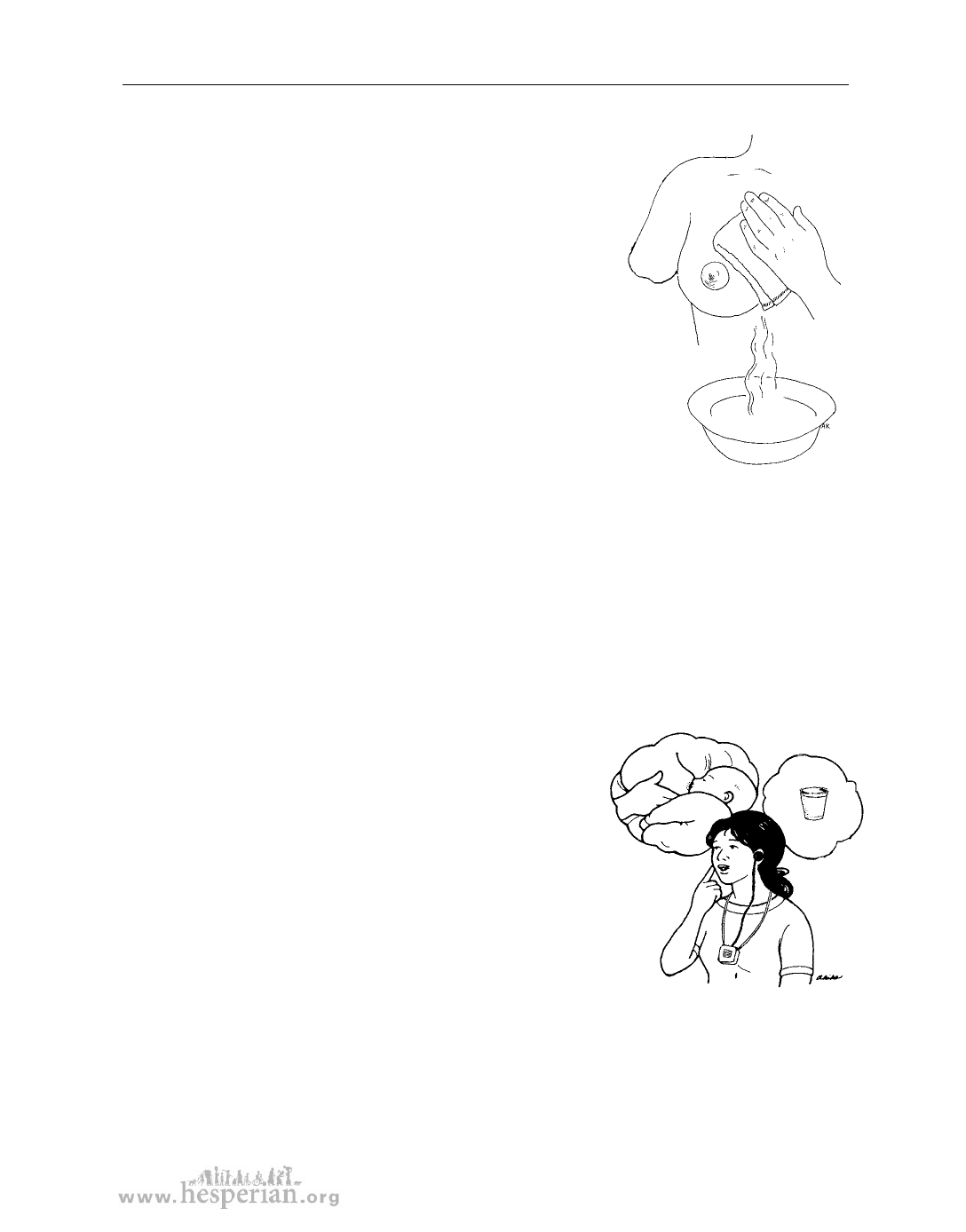
HIV/AIDS and breastfeeding 261
Treatment:
Keep breastfeeding frequently, giving the baby the
infected breast first, or milk the infected breast by hand,
whichever is less painful. The infection will not pass to
the baby.
• Rest and drink lots of liquids.
• Use hot compresses on the sore breast for 15 minutes
before each feeding. To reduce pain, use cold
compresses on the sore breast between feedings.
• Gently massage the sore breast while the baby is
nursing.
• Take paracetamol for pain (see page 350).
• Use an antibiotic. Dicloxacillin is the best antibiotic
to use (see page 341). Take 500 mg by mouth,
4 times each day, for 7 to 10 days. If you cannot find
this or are allergic to penicillin, use erythromycin (see page 343).
Take 500 mg by mouth, 4 times a day for 7 days.
HIV/AIDS and breastfeeding
For general information about HIV/AIDS, see page 169.
Some mothers with HIV pass the infection to their babies through breast milk.
Other mothers with HIV breastfeed their babies, and their babies do not become
infected. No one knows exactly why HIV is passed to some babies and not others.
HIV probably passes more easily during breastfeeding
when:
• the mother recently became infected with HIV.
• the mother is very sick with AIDS.
• the mother gives formula or other fluids along with
breast milk.
• the mother has cracked nipples or a breast infection.
• the baby has thrush in her mouth.
For most mothers, even mothers with HIV, breastfeeding
is the safest way to feed their babies. In places where
water is not always safe, many babies get sick and die
from diarrhea. And when people cannot always afford
enough formula, babies die from malnutrition.
Whatever you choose to do, do
not blame yourself if your baby
becomes infected with HIV. At
the moment, there is no way to
know for sure how to protect
your baby.
A Health Handbook for Women with Disabilities 2007